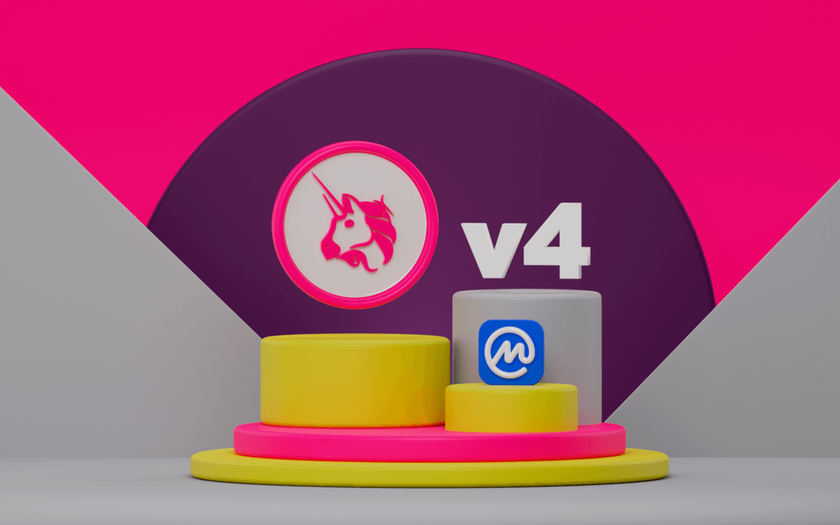Just one year later, Uniswap V3 was released, bringing the now well-known concept of
concentrated liquidity to the DeFi space.
Concentrated liquidity enables significantly greater
capital efficiency to the original AMM model through the concentration of liquidity in
liquidity pools. Moreover, this also gave liquidity providers the opportunity to earn outsized fees through their provided liquidity, provided they were savvy enough to keep their liquidity within the current trading range.
Uniswap V3 came with a significant downside though. Passive
liquidity providers were unable to take advantage of the benefits of Uniswap V3 and those who were inexperienced with it also lost out due to
impermanent loss.
Nevertheless, the concentrated liquidity model has still received mainstream adoption and has since been copied or adapted into a variety of models, with most prominent AMMs implementing some form of concentrated liquidity model on their platform.
Uniswap V4: Hooks and Custom Pools
Fast forward another two years, and we now have the
announcement of Uniswap V4 on June 12, 2023, the latest in Uniswap developments.
Uniswap V4 introduces the concept of “Hooks” to the platform. Hooks are essentially
contracts that run at specified points in a pool action’s lifecycle. These points can include, but are not limited to, when a pool is set up, when liquidity is added or removed, and when trades are made in the pool.
These hooks allow increased customizability over deployed pools on Uniswap V4, enabling pool creators to have greater control over the behavior of their pools.
In fact, together with publishing their draft code for Uniswap V4, the Uniswap team has also released a set of sample code for hooks they have written to demonstrate what’s possible with them. These include:
- A time-weighted average market maker (TWAMM) pool
- Dynamic fees based on volatility or other inputs
- On-chain limit orders
- Depositing out-of-range liquidity into lending protocols
- Customized on-chain oracles, such as geomean oracles
- Autocompounded liquidity pool fees back into the liquidity pool positions
- Internalized maximal extractable value (MEV) profits are distributed back to liquidity providers
In addition to hooks, Uniswap V4 is also designed to run out of a singleton contract. This means that all pools will share a single contract, which is opposed to the current architecture of every pool having its own smart contract. This is expected to generate savings of up to 99% for traders as token transfers are minimized in
swaps involving more than one pool. Moreover, the singleton contract enables flash accounting, which means that the changes in each pool are recorded as net changes rather than at the end of each swap, further increasing savings for users.
License Controversy
Currently, Uniswap V4’s draft code has been
open sourced, released under a Business Source License (BUSL). The team has also opened up the code base for contribution from the public.
The decision to release the code under BUSL has drawn flak from many developers who criticized the use of the term “open source” to describe the new Uniswap V4 codebase. While BUSL allows the code to be copied, modified and contributed to, it does not allow the code to be utilized for commercial uses for the next four years. This effectively makes it a proprietary license, and in most developer circles, would not qualify as “open source.”
Uniswap founder and CEO, Hayden Adams, and the team responded by claiming that four years is not a long time and that the protection that the license confers incentivizes innovation. However, other developers claim that the license instead stifles innovation due to fear of a copyright claim for any code that looks remotely similar. Adams has since retracted, stating that “source available is more accurate.”

Additionally, certain members of the DeFi community have also alleged that concepts of Uniswap V4 seemed to exhibit similarities to open source code from other teams. These allegations include the copying of protocols such as
Crocswap (now Ambient Finance) and
Shell protocol.
Furthermore, some DeFi users have even speculated that Uniswap V4’s announcement was accelerated due to Ambient Finance, a decentralized trading protocol,
hinting at their imminent launch earlier in the week. Ambient Finance has since launched on the Ethereum mainnet.































